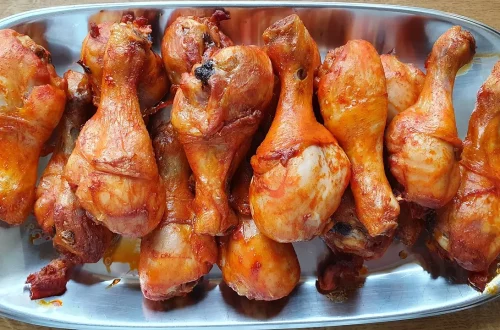
How to Care for Your Dog’s Cut Paw: Essential Tips and Remedies
Taking care of a dog is a rewarding experience filled with love and companionship. However, like all beings, dogs can experience injuries, including cuts on their paws. Such injuries can occur during walks, playtime, or even in the comfort of your home. It’s essential for dog owners to be vigilant and proactive when it comes to their pets’ health, especially when they face potential injuries that may affect their mobility and quality of life.
A cut paw can cause discomfort and pain, and if left untreated, it may lead to infections or more severe complications. Understanding the anatomy of a dog’s paw and the common causes of cuts can help you respond effectively to your furry friend’s needs. Moreover, knowing how to clean, treat, and protect the wound is vital in ensuring their quick recovery. By being knowledgeable and prepared, you can help alleviate your dog’s pain and provide comfort during their healing process.
In this article, we will explore essential tips and remedies for caring for your dog’s cut paw. From initial assessment to aftercare, our goal is to equip you with the information necessary to support your canine companion’s recovery journey.
Assessing the Injury
Before treating a cut on your dog’s paw, it’s essential to assess the injury correctly. Start by gently examining the paw in a well-lit area. Look for any visible signs of cuts, abrasions, or foreign objects lodged in the paw pads or between the toes. It’s important to remain calm and reassuring, as your dog may be anxious or in pain.
While examining the injury, take note of the size and depth of the cut. A minor cut may only require basic cleaning and protection, while deeper lacerations might necessitate professional veterinary care. If the cut is bleeding heavily, apply gentle pressure with a clean cloth or bandage to stop the bleeding. If the bleeding does not subside within a few minutes, it is crucial to seek veterinary assistance immediately.
Additionally, look for signs of infection, which may include swelling, redness, or pus. If your dog’s paw is excessively warm to the touch, or if they show signs of distress or lethargy, these may be indicators that a visit to the veterinarian is necessary.
Always keep your dog’s history in mind. If they have a history of allergies or skin sensitivities, this may affect how they respond to treatment. Understanding your dog’s medical background can be beneficial when discussing care options with your vet.
Cleaning the Wound Properly
Once you have assessed the injury, the next step is to clean the wound properly. Start by gathering the supplies you will need: sterile saline solution or clean water, antiseptic solution suitable for pets, soft gauze or cotton balls, and a clean towel.
Begin by rinsing the affected area gently with sterile saline or clean water to remove any dirt, debris, or bacteria. Be cautious not to apply too much pressure, as this may cause additional pain to your dog. If you notice any foreign objects embedded in the cut, such as splinters or glass, do not attempt to remove them yourself. Instead, consult your veterinarian for appropriate removal techniques.
After rinsing, pat the area dry with a clean towel. This step is crucial as moisture can promote bacterial growth and impede the healing process. Next, apply a pet-safe antiseptic solution to the wound. Avoid using human antiseptics, as some ingredients can be harmful to dogs. Follow the instructions on the product label and apply it gently without causing further irritation.
Once the wound is clean and disinfected, consider applying a sterile bandage to protect it from dirt and further injury. Wrap it snugly but not too tightly, as this may impede circulation. Change the bandage daily or whenever it becomes soiled or wet. Regularly check the wound for signs of healing or infection, and keep your dog from licking or biting at the bandage, as this can complicate recovery.
Providing Comfort and Aftercare
After treating the cut, providing comfort and proper aftercare for your dog is vital to ensure a smooth recovery process. Creating a calm and quiet environment can help your dog feel more at ease. If possible, confine them to a comfortable area where they can rest without being disturbed.
Keep an eye on their behavior and activity levels. It’s crucial to limit their movement to prevent further injury or strain on the affected paw. Short, controlled bathroom breaks are necessary, but avoid long walks or vigorous play until the injury has healed significantly.
To support the healing process, consider administering any veterinarian-recommended medications. This could include pain relief medications or antibiotics if prescribed. Always follow the dosage instructions provided by your vet and never give your dog human medications without consulting a professional first.
Additionally, monitor your dog’s eating and drinking habits. Ensure they are consuming enough water and maintaining a balanced diet to support the healing process. If your dog seems disinterested in food or shows signs of distress, it may be time to contact your veterinarian for further advice.
Finally, be patient and attentive. Healing can take time, and your dog may require extra care and affection during this period. Regular check-ins on the wound and providing reassurance can help your dog feel secure as they recover.
When to Seek Professional Help
While many minor cuts can be treated at home, there are specific situations where seeking professional help is essential. If the wound appears deep, jagged, or does not seem to improve within a few days, it’s crucial to visit your veterinarian.
Signs of infection, such as persistent swelling, discharge, or an increased temperature in the affected paw, necessitate immediate veterinary attention. Additionally, if your dog shows signs of severe pain, such as whimpering, limping, or reluctance to use the affected paw, it’s essential to consult a professional.
Another critical factor is the size of the cut. If it is larger than half an inch or if the wound extends beyond the skin into deeper tissues, it may require stitches or more advanced treatment.
Pre-existing health conditions can also play a role in your decision to seek veterinary care. If your dog has diabetes, a compromised immune system, or other medical issues, prompt attention may be necessary to prevent complications.
In summary, while caring for your dog’s cut paw can often be managed at home, knowing when to seek professional help is key to ensuring your dog’s health and well-being. Your veterinarian can provide the best course of action for treatment and recovery.
**Disclaimer:** This article is for informational purposes only and does not constitute medical advice. Always consult your veterinarian for any health concerns regarding your pet.




